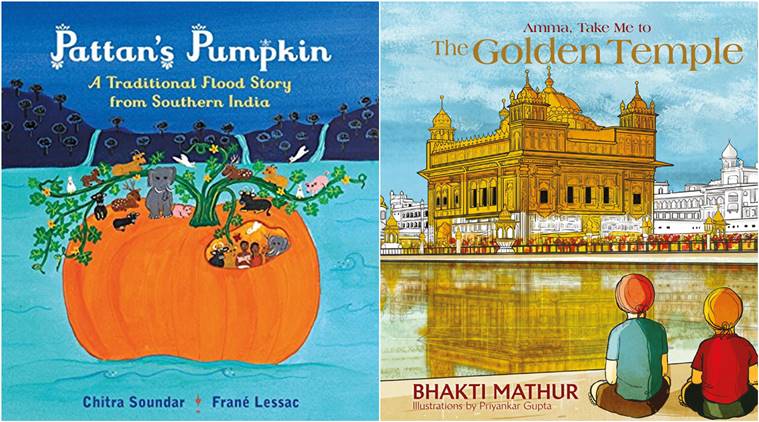 Wondering what to read?
Wondering what to read?
With the short-lived spring behind us, summer has well and truly arrived in our part of the world. What do these changing seasons tell us about our planet and about life in general and how can we read it better to learn about ecological balance?
Kiwis from New Zealand, avocados from the United States — our supermarket shelves are laden with fruits and vegetables that assure us that the world is indeed shrinking, and, should we so desire, we can have whatever we want at our fingertips. Except there will be a price to pay for it both literally and metaphorically. Little Neema in Bijal Vachcharajani’s What’s Neema Eating Today (2017, Pratham Books, appropriate for 4+), however, knows the importance of not just eating local, but also the joy of consuming what’s seasonal — juicy mangoes and silken lychees in summer, crunchy corn and lush jamuns in the rains, leafy greens in winter.
Vachharajani, who wrote the wonderful So You Want to Know About the Environment (2017), breaks down the message in bite-sized mouthfuls: when you eat with the season, you eat local produce that is fresh and free of preservatives. And, even if you don’t know about it, you are also being responsible towards the agrarian community of the land and to the environment — less carbon footprints can go a long way in ensuring the well-being of the planet.
Making paper boats and jumping over puddles, unexpected school holidays and crispy pakoras — watching the rain hammer down and wash everything clean is one of the abiding joys of childhood. In Raindrops by Vaishali Shroff (2002, Tulika Publishers, appropriate for 4+), little Avni watches the monsoon rain sweep over the neighbourhood from her window. Ruchi Mhasane’s soft watercolour illustrations bring to life the general mayhem caused by sudden showers — people hurrying past, umbrellas bobbing, the dark rain clouds lurking in the sky — but Avni also notices the little things that make the rains distinctive — the way it lashes across her window pane, for instance, blurring her vision and encouraging her to go on a flight of fancy. A whimsical, dreamy book just right for stay-at-home afternoons.
The rains can also be merciless, pelting down in torrents, sweeping past everything that stands in its way. In Pattan’s Pumpkin: A Traditional Flood Story from Southern India (2017, Candlewick, appropriate for 4+), Chitra Soundar revisits an old folktale of the Irula tribe that is similar to the Biblical story of Noah’s Ark and similar flood stories from different religions and cultures. The birds, bees and plants, the animals — pet and wild — find an amiable and invested neighbour in Pattan and his wife Kanni.
The couple tends to them and nurtures weaklings, among them an “ailing” pumpkin plant. Under their restorative care, the pumpkin plant blossoms and soon there is an enormous pumpkin whose growth shows no sign of abating. Then, when the floods come in all their torrential fury, Pattan knows there’s only one way to save everyone. Scooping out the giant pumpkin, they seek refuge in it along with all the other animals. They pile in sacks of grain, seeds and herb for food. For many days, the pumpkin keeps bobbing along the water, till one day, it reaches dry land where the sun is at its most merciful. It’s a dramatic tale, told with flourish, showing the not-so-benign face of nature and the destruction that natural calamities can cause.
If it’s winter, it must be the season of migrations. Every year, thousands of storks, flamingos and birds of other exotic vintage arrive in India during the colder months. But they aren’t the only ones. Birds and insects, reptiles and mammals — what makes animals move thousands of kilometres away from their habitat for a brief winter sojourn and then back again? In The Mysteries of Migration (2017, Katha, appropriate for 6+), Geeta Dharmarajan mulls over the many reasons that take animals far from their home territories and the precision with which they navigate these often-perilous journeys.
The short-sighted Brazilian green turtle that travels all the way to Ascension Island to lay its eggs with unerring precision; the humpback whales that leave the polar regions and move to warmer climes to birth their young or the wildebeests, zebras and gazelles that traverse thousands of kilometres to escape the drought in the savannahs — migrations are nature’s wonders at its best, making winter all the more exciting for the many guests it brings to our doorsteps.